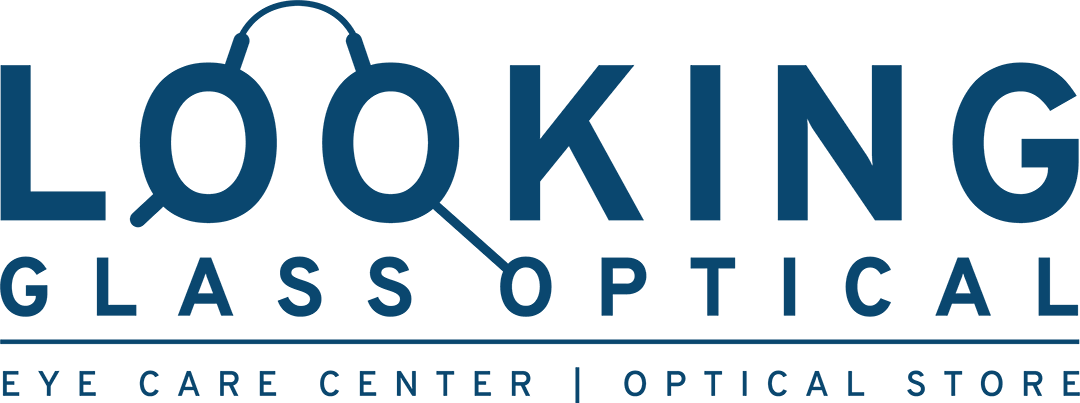How Screen Time Disrupts Your Sleep and Eye Health
These days, screen time is unavoidable. Smartphones, tablets, TVs, and computers are part of our daily routines—but too much exposure can take a toll on both your sleep and your eye health.
While technology offers many benefits, our eyes haven’t evolved to handle extended screen use and the blue light that comes with it. Here’s what you should know to protect your vision and your sleep.
What You Need to Know About Blue Light
Blue light is a high-energy wavelength found on the visible light spectrum. It’s emitted by digital screens and fluorescent lighting, but smartphones, tablets, and computers are the most significant sources of exposure in everyday life.
While moderate exposure to blue light is fine, extended screen time—especially at night—can interfere with your body’s natural rhythms and strain your eyes.
Blue Light & Your Sleep
Your circadian rhythm is your internal clock. It helps regulate when you feel awake and when it’s time to sleep. Natural sunlight helps trigger alertness in the morning, while darkness signals your body to wind down and release melatonin, the hormone that helps you sleep.
Blue light mimics daylight, which can confuse your brain into staying alert. Late-night scrolling or working under harsh screens suppresses melatonin and delays your ability to fall asleep.
Over time, this disruption can lead to trouble sleeping, grogginess, and fatigue that impacts your overall health—including your vision.
The Link Between Screens and Digital Eye Strain
Sleep and eye health are closely related. If you don’t get enough restful sleep, your body can’t repair damaged eye cells and tissues.
Too much screen time isn’t just bad for your sleep patterns; screens can strain your eyes in several ways, ultimately leading to discomfort and eye fatigue. Here are some common ways it can hurt your eyes:
1. Decreased Blinking
When you’re focused on a screen, your blink rate drops. Blinking is how your eyes stay lubricated. Your eyes rely on the lubricating fluids, and without them, your eyes can become dry, irritated, and uncomfortable.
Dry eyes are uncomfortable to deal with. You may experience a gritty sensation when blinking or notice your eyes burning and watering after prolonged screen time.
2. Eye Muscle Strain
The deep muscles of your eyes have to work harder to adjust your vision when looking at screens, especially for prolonged periods. Eventually, these muscles become tired and sore, a condition known as eye strain or eye fatigue. A few factors can worsen eye strain:
- Being too close to the screen
- Poor screen lighting
- Screen glares and reflections
- Not taking screen breaks
These habits can wear out your eye muscles and cause soreness and headaches.
3. Retinal Health Concerns
Blue light activates certain photoreceptors in your eyes differently from other wavelengths of light. Since blue light waves are high-energy and generally more intense than red-tinted light, they can disrupt your retinal health.
Some studies suggest that prolonged exposure to blue light may harm photoreceptors in the retina. Blue light may also contribute to age-related macular degeneration (AMD), which is characterized by retinal damage.
What You Can Do to Protect Your Eyes and Sleep
Screens are here to stay—but with the right habits, you can minimize the risks.
Use Blue Light-Blocking Glasses
Blue light-blocking lenses filter up to 30% of blue light waves, protecting your eyes from digital strain. If you can’t cut out your evening screen time, try to use blue light glasses starting at least two hours before bedtime. You can also place yellow or red filters over fluorescent lighting at home to reduce nighttime exposure to blue light.
Implement a “No Screens In Bed” Rule
Once you’ve gone to bed, your screen time should be done for the day. Don’t use your phone, tablet, or laptop in your bedroom. This supports your sleep and eye health by protecting your eyes at night and reserving your bedroom as a sleep-only space, helping you get better rest.
Use the Night Mode on Your Devices
Most phone and computer operating systems now come with built-in features that reduce blue light emissions. The night mode or warm setting is handy if you often work late into the night or like to scroll before bed. You can even schedule times for the display to change, so you don’t forget to adjust it.
Take Breaks During Screen Use
Staring at screens for long periods can strain your eyes, especially when you forget to blink. The 20-20-20 rule is a simple way to prevent digital eye fatigue: every 20 minutes, take a 20-second break to look at something at least 20 feet away. This brief pause helps relax your eye muscles, reduces dryness, and keeps your vision more comfortable throughout the day.
Schedule Regular Eye Exams
Regular exams with an experienced optometrist are crucial for protecting your long-term eye and sleep health. These exams allow your doctor to catch problems before they progress. Visit your optometrist at least once a year for an eye checkup and ask about ways to prevent digital eye strain.
Keep an Eye On Your Sleep and Eye Health
At Looking Glass Optical, we help patients manage digital eye strain and protect their vision for the long term. Whether you’re dealing with dryness, fatigue, or sleep issues tied to screen time, we’re here to help.
Schedule your eye exam today—and start seeing clearly, day or night.

